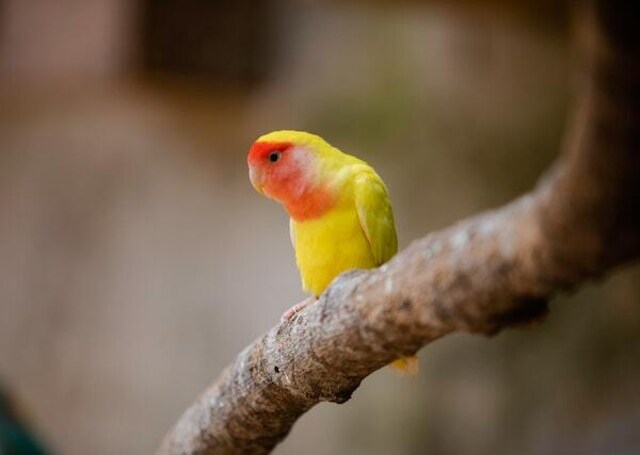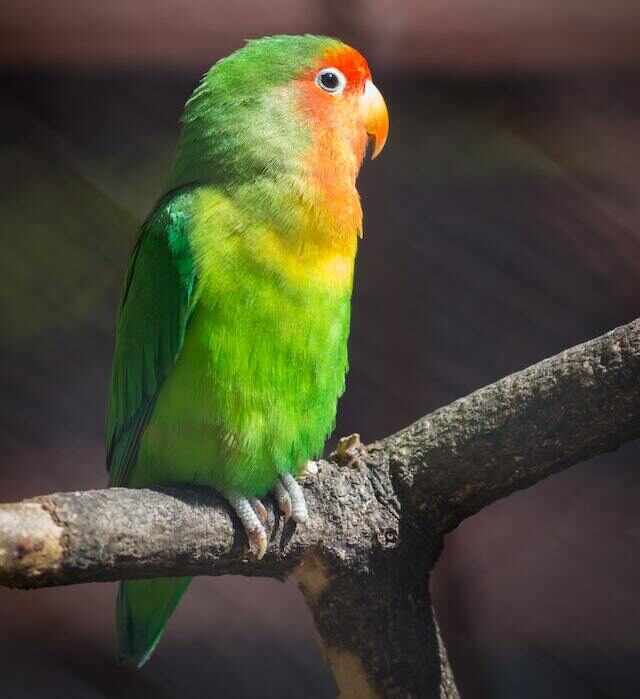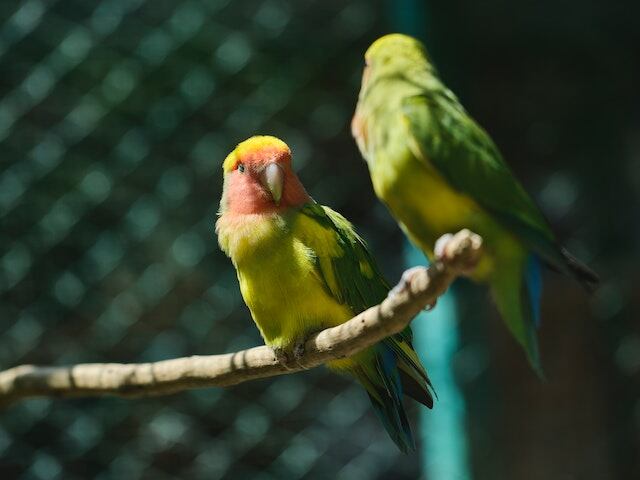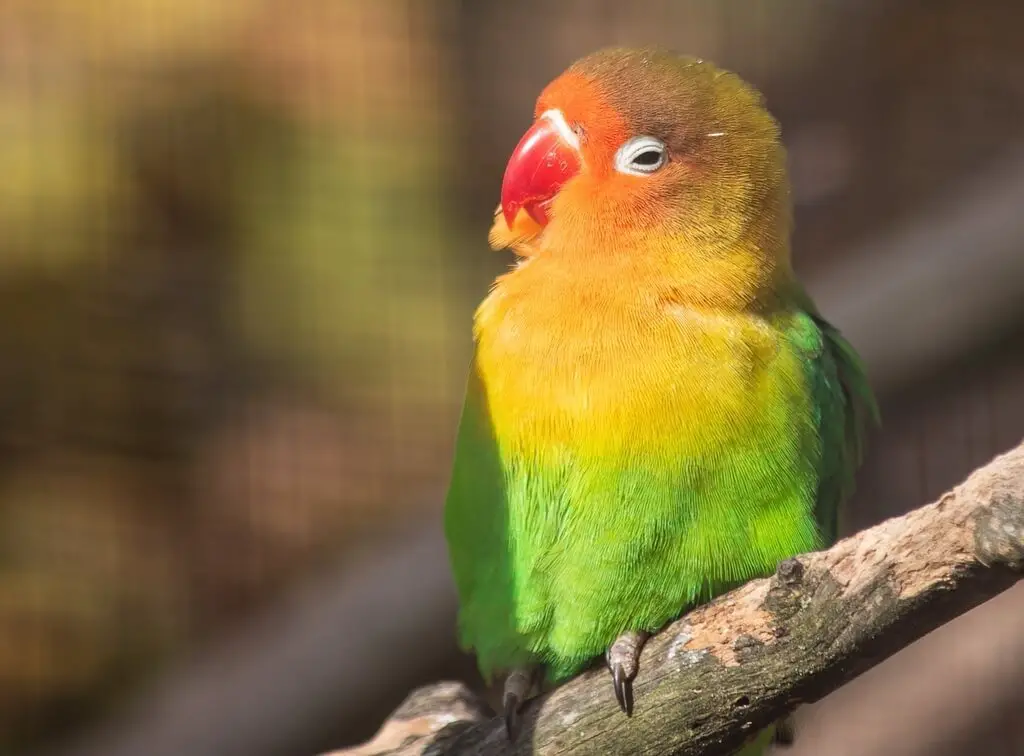
In this article, we will go through the most effective ways to answer the question ‘How To Attract Lovebirds To My Yard?’ There are many things that can be done, and in this article, I am going over some of my favorites. These methods have been tested by myself, and they work wonders!
Table of Contents
- 1 Key Takeaways
- 2 How To Attract Lovebirds To My Yard?
- 3 Distribution Range
- 4 Main Habitats
- 5 Lovebirds in the USA
- 6 Foods that Lovebirds Eat
- 7 Create a Bird-friendly Garden
- 8 Attracting them with Flowers
- 9 Provide them with Shelter
- 10 Set up a Bird feeder in your Yard
- 11 Provide a Nesting Box in your Yard
- 12 Put a Birdbath next to the Birdhouse
- 13 Final Thoughts
- 14 Author
Key Takeaways
- Location Matters: Lovebirds are more commonly found in warmer regions like Arizona and Florida.
- Familiar Foods: Offering a diverse diet of seeds, fruits, and greens can entice lovebirds to visit your yard.
- Water and Shelter: Providing clean water sources and cozy shelters, like birdhouses or shrubs, can make your yard inviting.
- Native Plant Appeal: Landscaping with native plants can attract insects, a natural part of lovebirds’ diet.
- Patience is Key: Attracting lovebirds may take time; patience and consistency with food offerings can yield results.
- Observation: Spend time quietly observing their behavior to learn about their preferences and adjust accordingly.
- Avoiding Harm: Keep the yard free from harmful chemicals, and discourage interactions with non-native species.
- Respectful Approach: Remember that lovebirds are wild birds; appreciate them from a distance without attempting to capture or domesticate them.

How To Attract Lovebirds To My Yard?
Attracting lovebirds to your yard involves providing them with a suitable habitat, food, and water. Lovebirds are attracted to areas with plenty of foliage, so planting trees and shrubs can help.
Providing bird feeders with seeds and fresh water can also help attract lovebirds to your yard. Additionally, providing nesting boxes can encourage lovebirds to stay and breed in your yard.
Distribution Range
Originating from the diverse landscapes of Africa, lovebirds stand as small parrots that bring unique charm to the continent’s natural canvas. Comprising nine distinct species, their presence is clouded by the looming threats of habitat degradation and the pet trade, leading to their status as vulnerable or endangered species.
Stretching their wingspan across the African expanse, lovebirds inhabit regions extending from Senegal and Gambia in the west to Ethiopia and Somalia in the east. This vast range underscores their ability to adapt to varying environments.
Across the ocean, lovebirds have also found a foothold in the warmth of select American cities. Notable locations include the arid embrace of Phoenix, Arizona, the vibrant streets of Austin, Texas, and the scenic backdrop of San Diego, California.
These instances of coexistence underscore the adaptability of these birds to different climates and environments.
Main Habitats
Lovebirds thrive across diverse habitats, spanning rainforests, savannas, and open woodlands. As cavity nesters, they ingeniously take refuge in tree hollows or repurpose abandoned bird nests as their cozy homes.

Lovebirds in the USA
Within the dynamic landscape of Phoenix, the Peach-faced Lovebird stands out as a remarkable avian presence. These small, vibrant birds are frequently observed perched atop tall trees or darting through the air in search of sustenance.
Known for their affinity for social interaction, Peach-faced Lovebirds readily establish bonds with humans. Their engaging behavior adds charm to the experience of bird enthusiasts. While not known for excessive vocalization, they emit energetic chirps and calls, particularly when excited or seeking attention.
To attract these captivating birds to your Phoenix surroundings, strategic steps are effective. Identifying favored locations such as bird baths, well-placed birdhouses, suitable feeding areas, and cozy nesting spots is crucial. Enhancing your space with artificial perches can amplify the allure for these avian visitors.
As Phoenix’s landscape comes alive, the presence of Peach-faced Lovebirds adds a delightful layer of vibrancy and color, inviting observers to appreciate the captivating world of these avian gems.
Foods that Lovebirds Eat
- Place a feeder out with some seeds from sunflower heads, black-oil sunflower, millet, nyjer or safflower seed.
- Plant fruit trees and bushes near your house, as these will attract birds as well as give you tasty snacks!
- Fruits like papaya, figs and grapes are both excellent for enticing these birds.
- Plant an assortment of native plants that offer food for both adults and their young such as berry bushes, nectar flowers like red clover or purple coneflower, insects like caterpillars and other invertebrates.
Create a Bird-friendly Garden
To create an ideal bird-friendly garden for Peach-faced Lovebirds, it’s essential to provide a habitat that closely mimics their natural environment. These birds are native to arid regions, such as the Namib Desert, and thrive in areas with plenty of sunshine and warmth.
Therefore, it’s important to choose plants that are native to these regions and that can provide food and shelter for these birds. Some examples of suitable plants include succulents, cacti, and desert wildflowers.
In addition to providing a variety of plants, it’s also important to provide a source of fresh water for Peach-faced Lovebirds. These birds need to drink regularly, and they also enjoy bathing in water. A bird bath or small fountain can be a great addition to your garden and can help attract these birds to your yard.
Another way to attract Peach-faced Lovebirds to your garden is by providing bird feeders with a variety of fruits and vegetables. These birds love to feed on fresh produce, including apples, grapes, and carrots. Providing a mix of seeds and nuts can also be a great way to attract these birds to your garden.
Finally, providing nesting boxes can encourage Peach-faced Lovebirds to stay and breed in your garden. These social birds are known for forming tight-knit pairs and can be great to watch during breeding season.
With a little bit of planning and effort, you can create a beautiful and bird-friendly garden that will be a haven for Peach-faced Lovebirds and other bird species.

Attracting them with Flowers
Another way of attracting a Lovebird to your backyard is to plant some flowers in the flowerbeds that surround your yard. These will attract many species of birds.
In addition to providing a good source of food for the Lovebirds, the flowers will also provide shelter from the elements, and a pleasant smell for the Lovebirds.
Flowers for birds contain nectar and pollen that are good for the different species of birds. Since these birds need this kind of nectar and pollen to survive, they will stay in your yard.
Plant a variety of flowering plants like: blueberry bushes, impatiens, petunias, hibiscus, morning glory vines, pink oleander flowers or even citrus trees.
Provide them with Shelter
So how do you attract a Lovebird to your yard? Firstly, make sure that you have adequate shelter for them. If your yard is shaded, and has no trees to provide shade, then you will want to consider building some bird houses.
Or you may consider purchasing nesting boxes for these beautiful birds and putting them up near your home.
Set up a Bird feeder in your Yard
Lovebirds love to feed on things like nectar and suet. If you have plants in your yard, they may not like the taste of what they eat, so make sure that you have a few different types of bird food available for them.
Make sure that you use bird feeders that have perches and holes so that they can easily reach their food. When you are choosing your feeder, make sure that you buy a few different sizes to fit your needs.
You can even buy bird feeders that have two different sizes so that they can choose between feeding on the left and the right side of the perch. A very popular feeder that works wonders is the Mr. Bird Wild Bird Feast Large Cylinder EZ Feeder.
This kit comes with 4 lbs. of bird food included and is available for a great price on Amazon. For the best replacement food, use the Mr. Bird Wild Bird Feast Birdseed.
If you are using bird feeders that have perches, be sure that they are tall and low to the ground. They enjoy watching and moving around the feeder, which helps keep their bodies at a good distance from the feeder.
Provide a Nesting Box in your Yard
Also, if you are looking to attract a Lovebird, then you will want to think about having some nice looking nesting box near your yard. These houses will allow the lovebirds to spend their winter, and return in the summer.
You should keep in mind that a number of these nest boxes are designed with an open roof, so that the Lovebirds can fly through them and get up close to the ground to perch.
To get these birds to visit, you can either place a perch on a wall or hang a rope over the branches of your nest box or birdbath and let the birds come and land on it.
These structures can be made from wood or plastic. However, you should make sure that you choose wooden bird houses if you want them to stay in them. I would recommend this nesting box, you can get it on Amazon.

Put a Birdbath next to the Birdhouse
A great way to attract a lovebird is by putting a birdbath like this one, next to your birdhouse. One more great idea to encourage them to your garden is to keep a birdbath in your garden, which is very useful especially for attracting birds like this.
The birds enjoy watching the water droplets, and it will surely attract the Lovebirds. You can either use a regular birdbath or an outdoor birdbath with perches and perch covers.
Final Thoughts
These are the things that you need to consider when you are trying to entice the lovebird into your yard. You just need to remember to pay attention to the different species of birds that are out there and that they will be happy with your choice.
You should know what kind of birds are present in your area before you buy or plant anything for them to enjoy. This will make it easier for you to be successful with attracting the lovebird species to your yard.
Making sure that you do everything right, and it will help you attract birds in your yard, especially the species that are the most interesting to watch.



